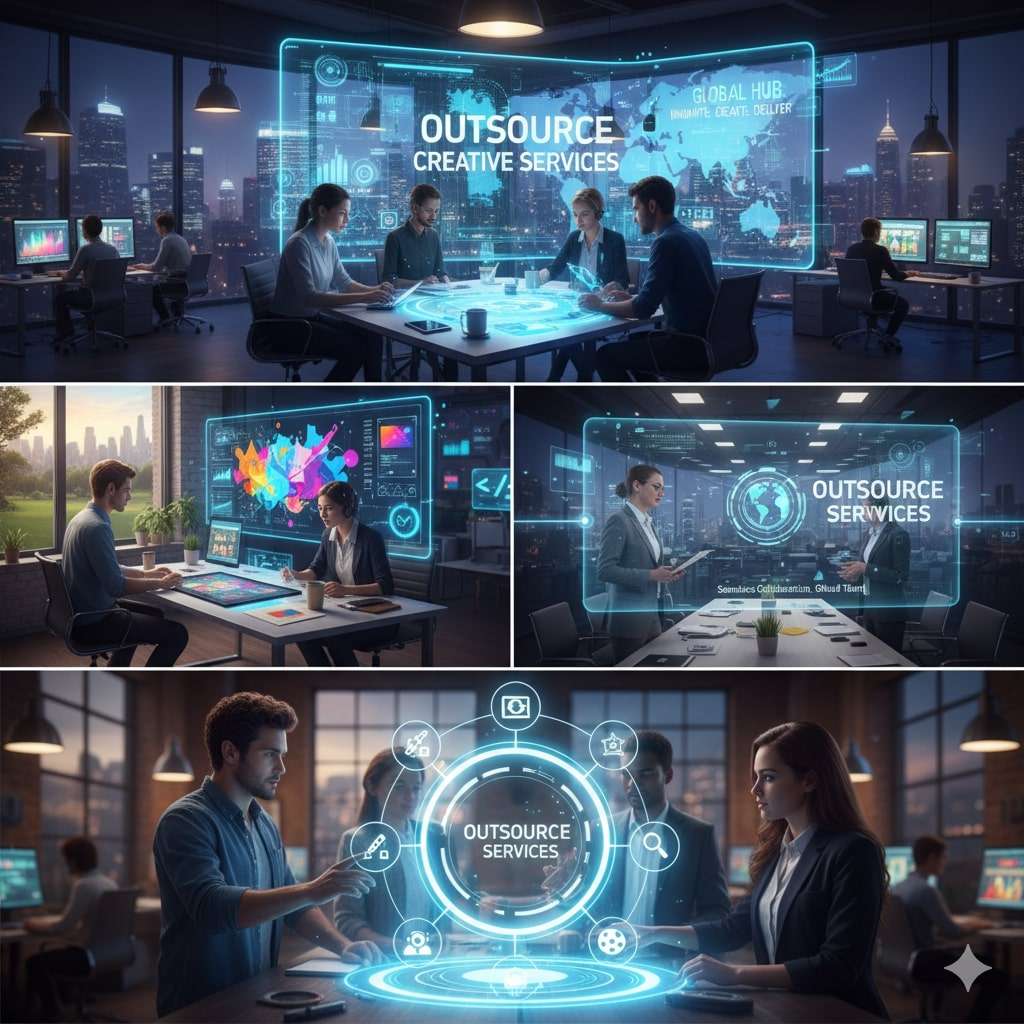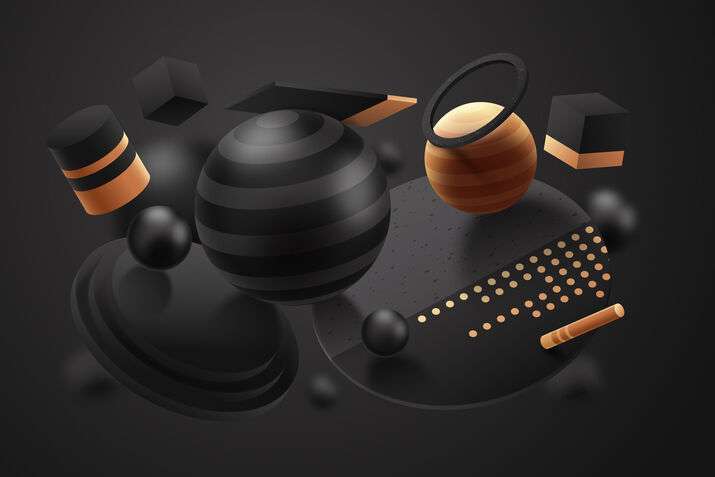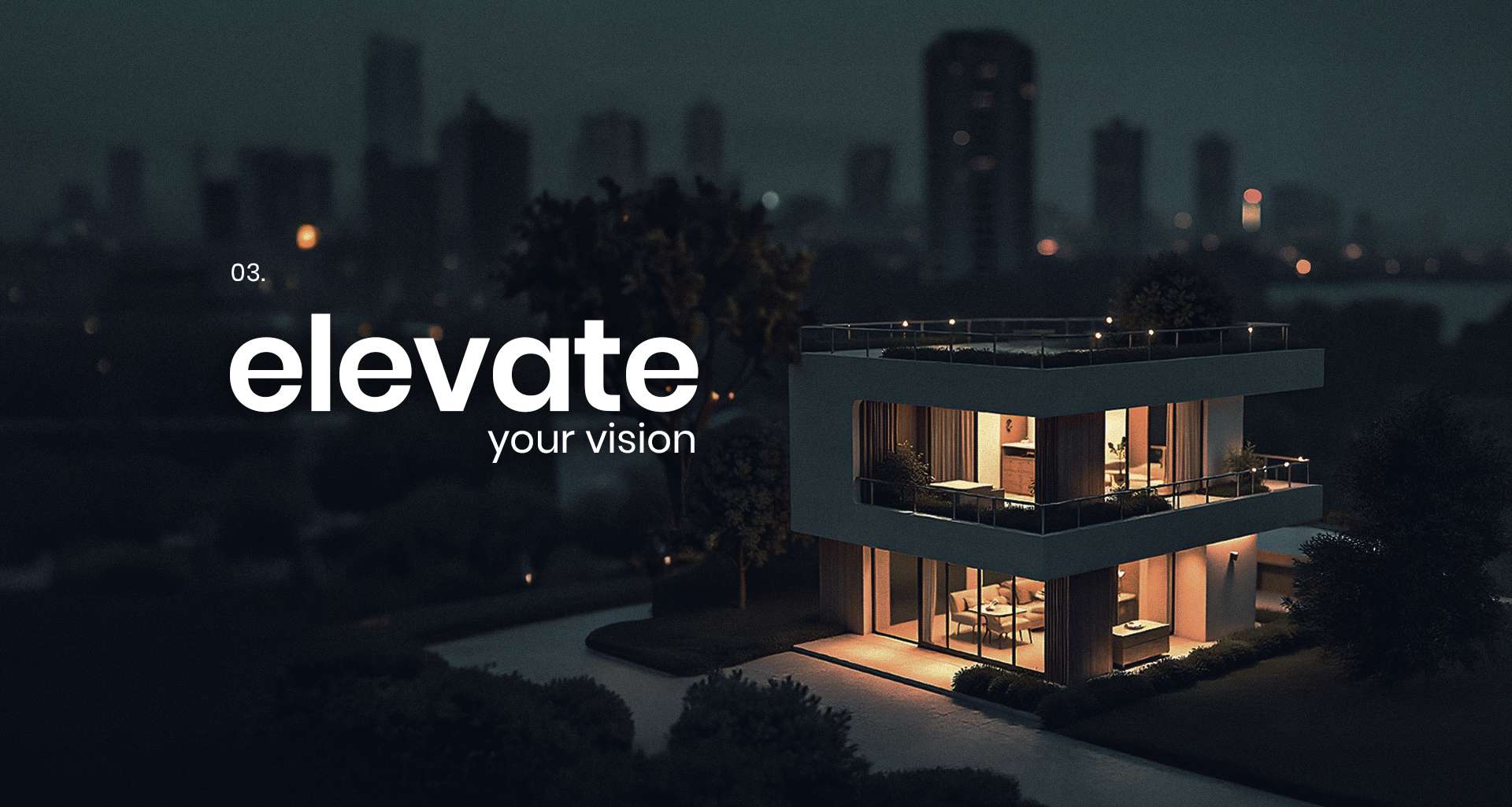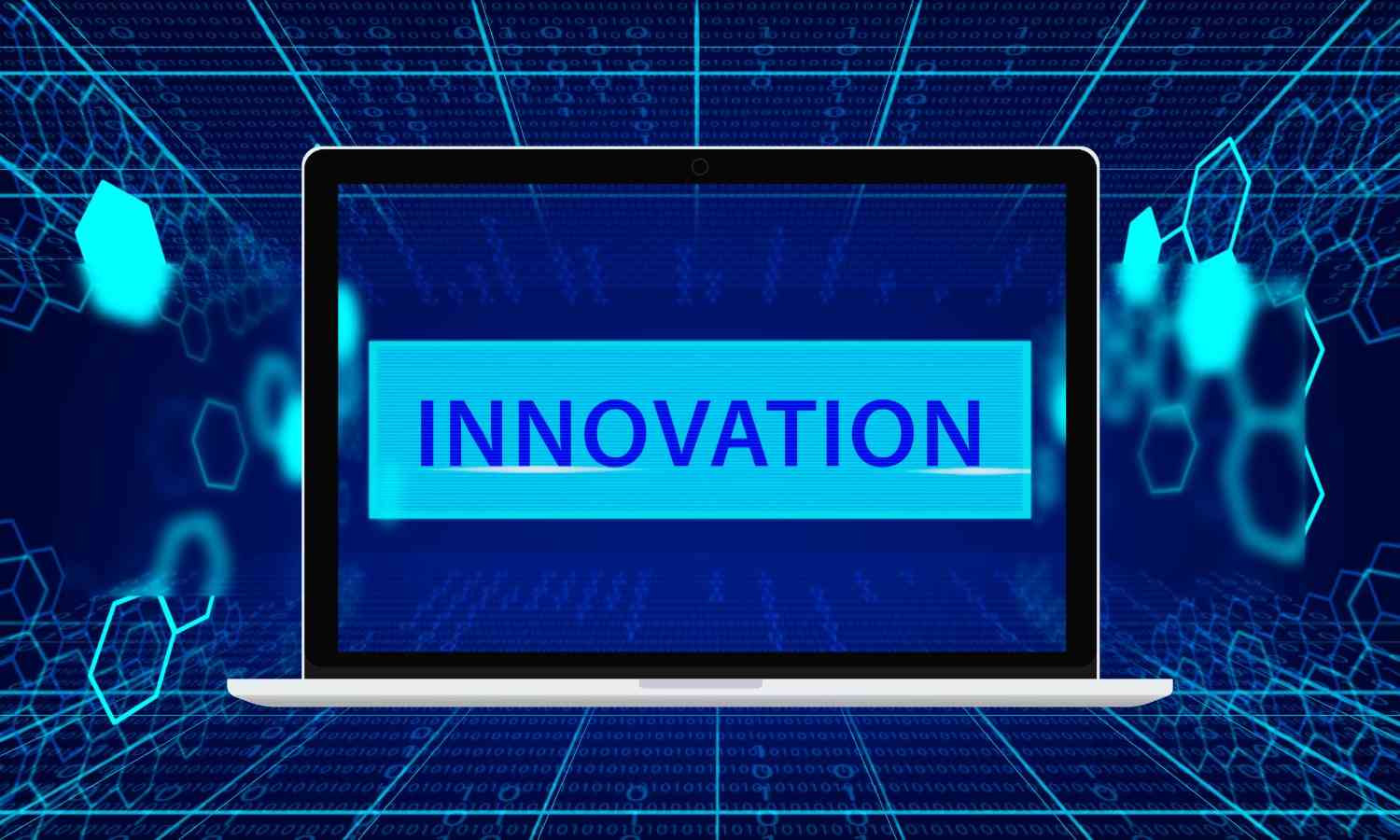How to Select the Right Creative Outsourcing Services Partner 🤝
Posted on : Oct 29, 2025
In today’s hyper-visual, fast-paced digital economy, content is king, and creativity is the crown jewel. Businesses constantly grapple with the need to produce high-volume, high-quality Creative Services across an ever-expanding spectrum—from engaging marketing materials to immersive spatial experiences. The in-house team, no matter how talented, often hits a wall of capacity, specialized skill gaps, or budgetary limitations. This is where the strategic decision to Outsource creative services becomes essential.
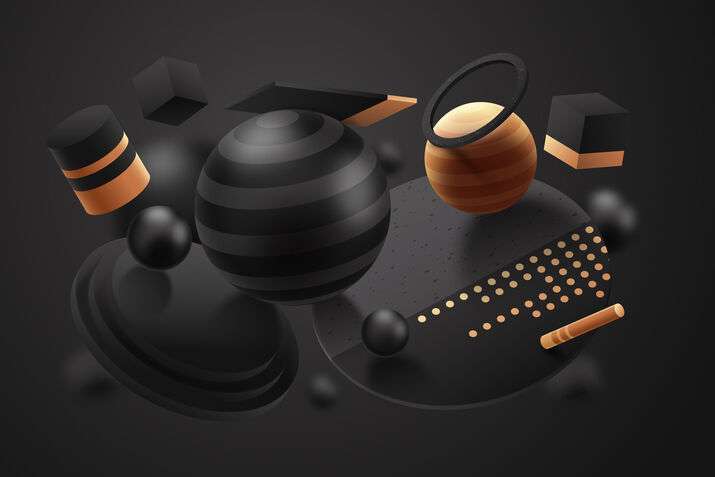
However, outsourcing your creative vision is a significant business move, not a simple vendor transaction. Selecting the right partner can unlock unparalleled scalability and access to niche expertise, while choosing poorly can lead to missed deadlines, inconsistent quality, and severe brand damage.
This comprehensive guide serves as your playbook for vetting and securing a long-term, high-value partner for your Outsource creative works, with a specialized focus on crucial, future-forward domains like 2D Services, VFX, and AR-VR modeling.
I. Laying the Foundation: Defining Your Creative Outsourcing Strategy
Before sending out an RFP, a successful partnership begins with rigorous internal clarity. The objective is not just to offload tasks, but to strategically augment your internal capabilities.
1. The Clarity of the Creative Brief: Know What You Need
The single most common failure in outsourcing is a lack of a clear, detailed brief. Your potential partner cannot meet an expectation you haven’t clearly defined.
- Define Scope and Volume: Are you looking for a single, large project, or ongoing, high-volume production like daily social media graphics or thousands of 2D Graphics & Illustration assets?
- Establish Quality Benchmarks: Provide examples of work that you consider perfect. Share your brand guidelines, a detailed style guide, and technical specifications (e.g., file formats, resolution, software compatibility).
- Identify Core Expertise: Do you primarily need an Outsource creative design services partner for branding and marketing, or do your needs lean toward technical artistic fields like game asset creation, industrial visualization, or cinematic VFX?
2. Strategic Goal Alignment: Why Are You Outsourcing?
Your reason for outsourcing dictates the type of partner you need.
| Strategic Goal | Partner Profile Requirement |
| Cost Reduction | Look for partners in regions with favorable labor costs, but with strict Quality Assurance (QA) protocols. |
| Speed & Volume | Requires a partner with a large, agile team and a 24/7 or follow-the-sun workflow. |
| Specialized Skills | Demands a boutique studio or agency with an elite portfolio in your niche (e.g., photorealistic VFX, complex AR-VR development). |
| Innovation | Seek a partner with a dedicated R&D department, often evidenced by case studies featuring new technologies. |
II. The Portfolio Deep Dive: Evaluating Core Creative & Technical Expertise
A shiny website can be deceptive. The true measure of an outsourcing partner lies in their demonstrable track record.
1. Expertise in 2D Services and Illustration
For many businesses, the bulk of their daily content falls under the umbrella of 2D Services. This includes everything from marketing collateral and iconography to sophisticated character design for animation or gaming.
- Look for Versatility and Consistency: Can they adapt to different styles—from flat vector graphics for a corporate infographic to detailed, hand-drawn 2D Graphics & Illustration for an explainer video? Consistency in quality across diverse projects is a critical indicator of a mature studio pipeline.
- Pipeline Efficiency: Ask about their process for initial sketching, line art, coloring, and final rendering. An efficient 2D pipeline should minimize revisions by providing multiple checkpoints early on.
2. Mastering VFX Outsourcing Workflows
Visual Effects (VFX) projects demand an extraordinarily high level of technical and artistic integration. Outsourcing VFX requires a partner who understands the entire production pipeline.
- Technical Proficiency is Non-Negotiable: Check their fluency in industry-standard software (Maya, Houdini, Nuke, Blender, etc.). Do they understand the technical nuances of rendering, compositing, and integrating their assets seamlessly into live-action footage or game engines?
- Showcase of Complexity: Look for case studies that involve complex work—fluid dynamics, destruction, character rigging, or green-screen keying. A strong VFX portfolio will demonstrate an ability to manage intricate, multi-layered shots under tight deadlines.
- Data Security and Transfer: VFX files are massive. A reliable partner must have secure, high-speed file transfer protocols (like Aspera or custom FTP) and robust IP protection measures.
3. The Future of Interaction: AR-VR Outsourcing Workflows

Augmented Reality (AR) and Virtual Reality (VR) represent the most specialized segment of Outsource creative works. Success in this space is less about design and more about technical artistry and spatial storytelling.
- Real-Time Optimization: AR-VR assets must be highly optimized for real-time rendering. Your partner must demonstrate expertise in low-poly modeling, UV mapping, texture baking, and efficient asset-loading strategies for platforms like Unity or Unreal Engine.
- Platform-Specific Experience: Do they have a proven track record creating experiences for Oculus/Meta Quest, HTC Vive, HoloLens, or mobile AR platforms (ARKit, ARCore)? Each platform has unique technical constraints that a specialist must navigate.
- Interaction Design (UX/UI in 3D): The partner needs to understand how users naturally interact in a 3D space. Review their case studies for intuitive menu systems, comfort considerations (to prevent motion sickness), and effective spatial audio integration.
III. Vetting the Partnership: Communication, Security, and Scalability
Once technical expertise is confirmed, the focus shifts to the practicalities of a long-term collaborative relationship.
1. Communication and Cultural Alignment
Miscommunication is the number one project killer.
- Establish a Communication Rhythm: Demand a clear communication plan: who is your primary point of contact (the Project Manager), how often will you have check-in meetings, and what tools will be used (Slack, Trello, Jira)?
- Time Zone Strategy: If you need rapid turnarounds, a partner operating on a different time zone can be an asset (offering 24/7 work cycles), but it requires a dedicated overlap window for daily handovers and critical meetings.
- Cultural Fit: While not as critical as technical skill, a partner whose work ethic, responsiveness, and approach to feedback aligns with your company culture will lead to a much smoother relationship.
2. Security and Intellectual Property (IP) Protection
When you Outsource creative design services, you are sharing proprietary information, brand assets, and potentially unreleased product details.
- Non-Disclosure Agreements (NDAs): A strong, legally-binding NDA is the baseline.
- Data Security Protocols: Inquire about their IT security: server encryption, access control measures, and physical security of their facilities. For high-stakes VFX and AR-VR projects, a partner’s commitment to protecting your work from leaks is paramount.
- Contract Clarity on IP Ownership: Ensure the contract explicitly states that all final work, raw files, and intermediate assets become your sole intellectual property upon payment.
3. Workflow, Quality Assurance, and Flexibility
A partner must not just produce, but produce reliably and correctly.
- The QA Process: How many stages of review does a file go through before it reaches your desk? A mature creative partner will have a dedicated QA team—separate from the creators—to check against the brief, technical specs, and brand guidelines.
- Revision Policy: Get a clear, contractual understanding of what constitutes a revision and how many are included in the price. Ambiguity here is a primary source of budget creep.
- Scalability Test: Can they handle a sudden 50% increase in your need for Creative Services during a busy marketing season? The ability to scale up or down without compromising quality is a hallmark of a truly strategic outsourcing partner.
IV. The Path to Partnership: Final Steps
The last phase is about testing the relationship before full commitment.
Moving from Vendor to Partner: Fostering Success
The selection process is only the beginning. Successful Outsource creative design services relationships thrive on a structured, collaborative approach:
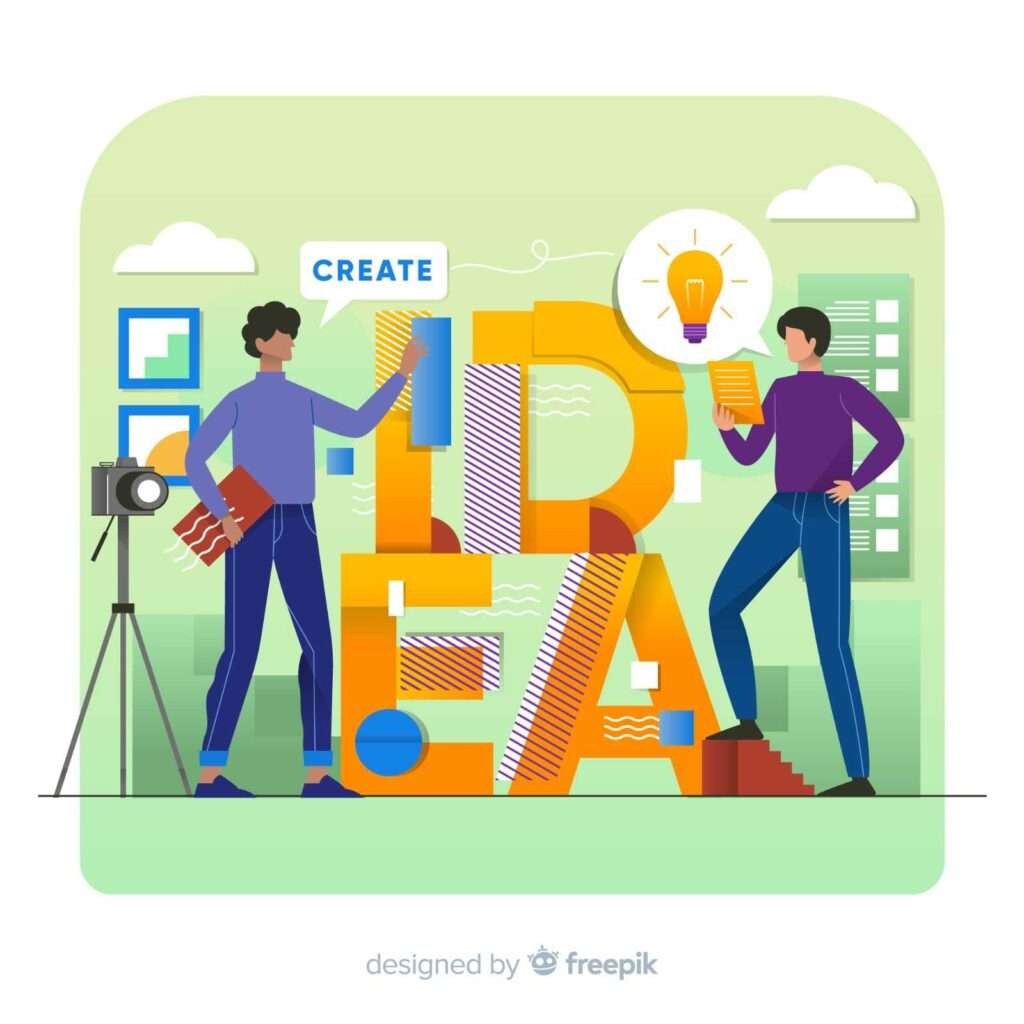
- Start Small (The Pilot Project): Always begin with a contained, non-mission-critical project. Use this pilot to test the partner’s communication, their adherence to the brand guide, turnaround time, and the quality of their 2D Services or initial asset creation.
- Document Everything: Create a Creative Services Bible—a single, detailed document outlining brand colors, typography, tone of voice, required file formats, and technical standards for all 2D Graphics & Illustration and 3D work.
- Appoint a Single Point of Contact (SPOC): Designate one person on your internal team as the ultimate decision-maker and liaison. This eliminates conflicting feedback and streamlines the entire workflow.
By adopting a rigorous, multi-faceted approach that evaluates both creative skill and operational strategy, businesses can move confidently to Outsource creative works, transforming a potential risk into a powerful, scalable competitive advantage.
1. The Paid Pilot Project
Never jump into a multi-month contract for a large project. Propose a small, paid test project—one that is representative of the complexity and volume of your long-term needs. This is the ultimate litmus test for quality, communication, and adherence to deadlines.
2. Value vs. Cost
While cost efficiency is a driver for many to Outsource creative works, the cheapest bid is often the most expensive choice in the long run. Evaluate the value—the combination of high-quality output, rapid turnaround, and smooth communication—against the cost. A slightly higher rate for a partner with a proven QA system and efficient workflow will almost always deliver a higher ROI than a low-cost vendor whose work requires constant, time-consuming corrections.
By approaching the selection process with this level of strategic due diligence, you move beyond simply finding a vendor. You will secure a genuine partner who not only handles your Outsource creative services but becomes a seamless extension of your creative team, ready to scale your vision from foundational 2D Services to complex, immersive experiences in AR/VR. This strategic alliance is the key to maintaining a competitive, creative edge in the modern digital marketplace.
Frequently Asked Questions (FAQ)
1. What is the most critical factor when selecting an Outsource creative services partner?
The most critical factor is Workflow Compatibility and Communication. A partner’s talent is useless if their process doesn’t integrate smoothly with your internal team’s feedback loop and project management systems.
2. How should I evaluate a partner’s expertise for specialized work like AR-VR?
For VFX and AR-VR Outsourcing workflows, evaluate their ability to create highly optimized assets. Ask to see case studies demonstrating low-polygon, real-time ready models and ask about their experience with specific AR/VR platforms (e.g., Unity/Unreal Engine optimization).
3. What is a “Creative Services Bible,” and why is it important for 2D Services?
A Creative Services Bible is a comprehensive document detailing all brand guidelines, file preparation standards, required formats, and technical specifications. It’s crucial for 2D Graphics & Illustration to ensure every outsourced asset is perfectly consistent with your brand without constant internal revisions.
4. Should I choose a partner based solely on the lowest price?
No. Choosing solely on the lowest price often leads to hidden costs from poor quality, excessive revision cycles, and project delays. Focus instead on the Value Proposition, which is a balance of price, quality consistency, and specialized expertise.
5. How do I protect my Intellectual Property (IP) when I Outsource creative works?
Ensure a robust, legally binding Non-Disclosure Agreement (NDA) is in place, specifically addressing IP ownership and usage rights. Additionally, inquire about the partner’s internal data security protocols and secure file transfer methods.
6. What is the benefit of a “fixed-price” model for Outsource creative design services?
The fixed-price model provides budget predictability and incentivizes the partner to work efficiently. You agree on a cost for a defined deliverable (e.g., a finished animation or a set of 2D Services assets), meaning the total cost is guaranteed regardless of the time the partner spends.

